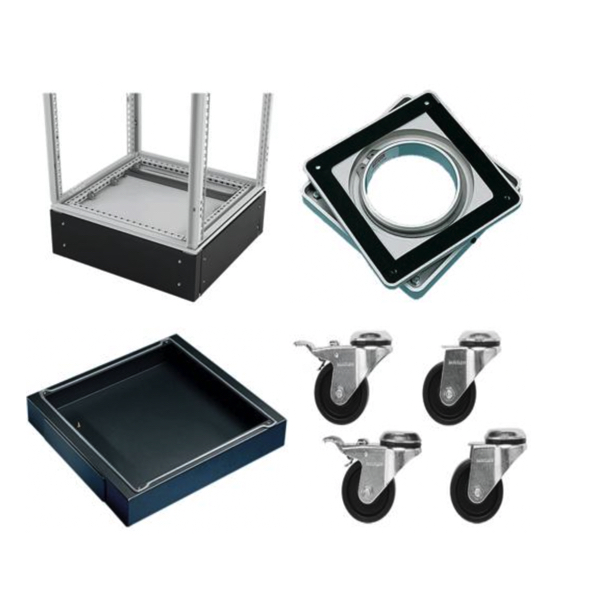Enclosure Bases & Base Accessories

Enclosure bases and base accessories support the installation, stability, and usability of industrial electrical enclosures while helping maintain proper environmental protection. Electrical enclosures are designed to house control and power components safely, protecting both equipment and operators from electrical hazards. Selecting the appropriate base configuration depends on enclosure size, mounting style, cable entry requirements, and the surrounding environment.
RSP Supply offers a wide range of enclosure base options including solid bases, plinth bases, transportation bases, swivel bases, and combination swivel-and-tilt bases. Solid bases are commonly installed beneath freestanding enclosures and often include side gland plates and provisions for optional casters, allowing heavy enclosures to be repositioned when needed. Plinth bases elevate enclosures to provide space for bottom cable entry while improving airflow and accessibility.
Additional base accessories such as casters, leveling kits, base covers, and gland plates help adapt enclosures to specific installation and operational needs. Swivel and swivel-and-tilt bases are frequently used with operator interface and HMI enclosures, allowing operators to rotate or tilt panels for optimal visibility and ergonomic operation. These base solutions support flexible enclosure layouts while maintaining proper protection and structural integrity.
FAQs
Q: What are enclosure bases used for?
Enclosure bases support freestanding or floor-mounted enclosures by providing stability, cable entry access, mobility, or ergonomic positioning depending on the base type.
Q: What is the difference between solid bases and plinth bases?
Solid bases attach directly to the bottom of an enclosure and may include gland plates or caster mounting points. Plinth bases elevate the enclosure and provide space for bottom cable entry and access panels.
Q: When should casters or leveling kits be used?
Casters are used when enclosures need to be moved or repositioned, while leveling kits are used to stabilize enclosures on uneven floors and ensure proper alignment.
Q: What are swivel and swivel-and-tilt bases used for?
Swivel bases allow operator interface enclosures to rotate for convenient access, while swivel-and-tilt bases allow both rotation and angle adjustment for improved visibility and ergonomic operation.
Q: How do enclosure bases relate to NEMA ratings?
When properly installed with compatible accessories such as gasketed gland plates, enclosure bases can help maintain the enclosure’s NEMA rating, including NEMA 3R, 4, or 4X, depending on the enclosure design and materials.
Why Buy Enclosure Bases & Base Accessories from RSP Supply
RSP Supply offers a comprehensive selection of enclosure bases and base accessories designed to support secure installation, flexible configuration, and long-term durability of industrial enclosures. Our product lineup helps ensure proper enclosure support, cable management, and operator accessibility across a wide range of industrial environments. Customers rely on RSP Supply for dependable industrial components, knowledgeable technical support, and consistent sourcing for enclosure hardware and accessories.

